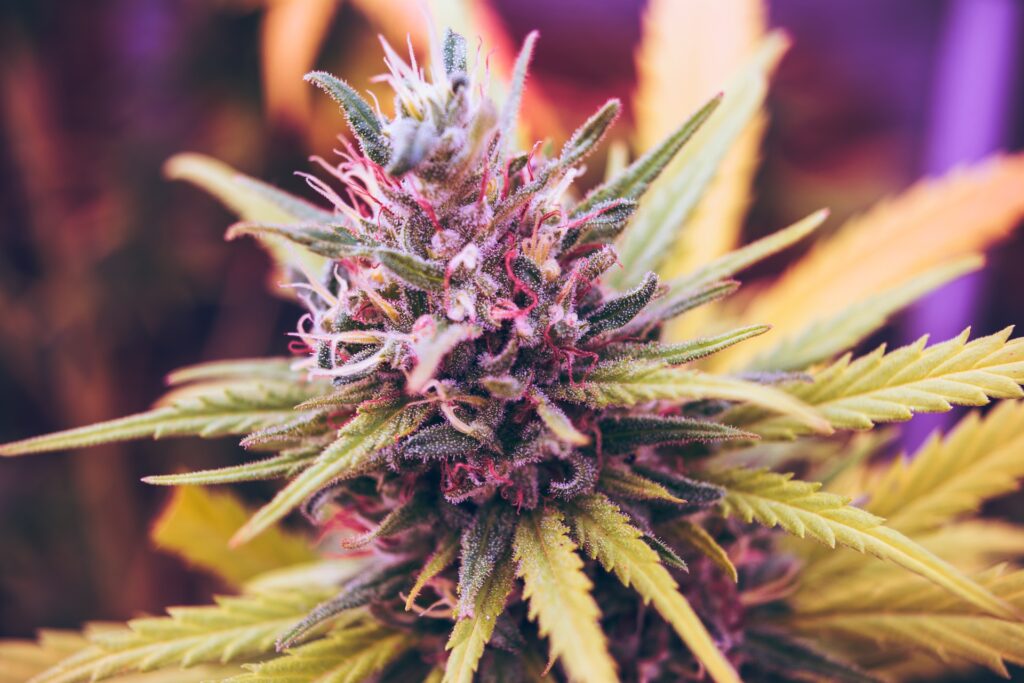The European Commission has approved a new autoflowering cannabis variety by CBD Seed Europe, promising to lower cultivation costs and facilitate growth in colder climates like the UK. These seeds, less dependent on light conditions, enable denser and more frequent cultivation, although they tend to have less stable genetics and lower yields compared to traditional photoperiod varieties.
A New Autoflowering Cannabis Variety Added to European Catalogue


The European Commission has approved a new autoflowering cannabis variety, which, according to its creators, could be a game-changer for farmers in colder regions.
For more news like this, along with all the latest in legalization, research, and lifestyle, download our free cannabis news app.
New Variety Registration in Europe
CBD Seed Europe, the company that registered these feminized CBD cannabis seeds, asserts that these seeds will not only lower the barrier for farmers hoping to break into the market but also allow those in colder Northern European climates, like the United Kingdom, to significantly reduce the costs of cultivating cannabis and extracting CBD.
Americo Folcarelli, founder of CBD Seed Europe, shared with Business Of Cannabis: “I am very proud of the hard work of our breeders and genetic research team, who managed to accomplish what everyone thought impossible within the strict requirements of the European Union.”
In France, these autoflowering seeds are exclusively available at France Botaniques.
Understanding Autoflowering Seeds
Cannabis Sativa plants are traditionally “photoperiodic” species: they rely on changes in light and dark duration to trigger flowering.
In nature, plants bloom towards the end of summer when days get shorter. For growers, especially in colder climates with less sunlight, one of the most significant and costly challenges is controlling the light environment.
However, as their name suggests, autoflowering species can transition from the vegetative stage to the flowering stage based on their age and overall growth, independent of lighting cycle changes.
This transition usually occurs between two and four weeks after germination, and for CBD Seed Europe’s product, the total growth period is 75 days.
While these autoflowering seeds have been readily available in North America for some time, stricter quality control procedures in the European Union have so far prevented these seeds from being legally available.
Mr. Folcarelli explained to Business of Cannabis: “One of the main hurdles to registering a genetic seed in the European Union catalog is that it has to be very, very stable. That means there can’t be a wide range of phenotypes.”
“Typically, autoflowering varieties have this kind of issue, presenting five or six different phenotypes. We have managed to reduce the number of phenotypes to technically three, but it’s impossible to distinguish one from another.”
In Europe, any seed, whether it’s cannabis or tomatoes, must undergo a two-year registration process to be listed in the common catalog, with producers subjected to regular audits to ensure the seeds continue to meet the standard.
Advantages and Disadvantages of Autoflowering Varieties
Autoflowering varieties offer several advantages for farmers. Being less dependent on light, they allow cultivation during winter months. They are also much better suited to outdoor growing operations, where precise control of light conditions is not possible.
For indoor growers, the reduction in the amount of light needed can significantly cut expenses and the carbon footprint of growers.
Moreover, the short life cycle allows farmers to grow multiple plants in a single season, while the compact size and quick flowering enable denser planting, effectively doubling the number of plants to grow.
These combined factors make autoflowering varieties much more attractive for farmers who are first-time cannabis cultivators.
Of course, there are also drawbacks compared to traditional varieties. As described earlier, the genetics of autoflowering varieties can be less stable, resulting in more variation between individual plants with a large number of phenotypes.
While the automatic nature of the flowering process has its benefits, it also means there are fewer opportunities for control, limiting the ability to manipulate plant size or address issues like topping or pruning.
Although plants can be grown much more densely, autoflowering plants tend to yield lower and often have lower CBD levels compared to traditional photoperiod varieties. However, CBD Seed Europe has also had approved CBD cannabis seeds whose plants develop up to 12% CBD while remaining under 0.3% THC.
—
(Featured image by Esteban López via Unsplash)
DISCLAIMER: This article was written by a third-party contributor and does not reflect the opinion of Hemp.im, its management, staff, or its associates. Please review our disclaimer for more information.
This article may include forward-looking statements. These forward-looking statements generally are identified by the words “believe,” “project,” “estimate,” “become,” “plan,” “will,” and similar expressions. These forward-looking statements involve known and unknown risks as well as uncertainties, including those discussed in the following cautionary statements and elsewhere in this article and on this site. Although the company may believe that its expectations are based on reasonable assumptions, the actual results that the company may achieve may differ materially from any forward-looking statements, which reflect the opinions of the management of the company only as of the date hereof. Additionally, please make sure to read these important disclosures.
First published in Newsweed, a third-party contributor translated and adapted the article from the original. In case of discrepancy, the original will prevail.
Although we made reasonable efforts to provide accurate translations, some parts may be incorrect. Hemp.im assumes no responsibility for errors, omissions or ambiguities in the translations provided on this website. Any person or entity relying on translated content does so at their own risk. Hemp.im is not responsible for losses caused by such reliance on the accuracy or reliability of translated information. If you wish to report an error or inaccuracy in the translation, we encourage you to contact us.



Comments are closed for this post.